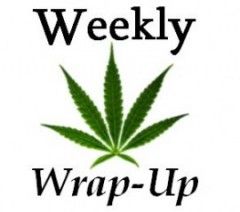By Eli McVey
Wholesale marijuana prices in Nevada increased sharply around the July 1 rollout of the state’s new recreational program, a week in which businesses faced stronger-than-anticipated demand and supply shortages caused by hiccups in the distribution process.
As the name implies, the four-week trailing average incorporates four weeks of pricing data to minimize the impact of any outlying data points, so actual wholesale price increases after the start of rec sales were even more dramatic.
For example, the single-week average price for a pound of wholesale marijuana in Nevada rose by $350 from June 30 to July 7 – a 15% jump.
Existing medical cannabis cultivators – the only producers of recreational marijuana permitted under Nevada’s so-called early start program – appeared ready to handle the influx of new adult-use customers as they ramped up production ahead of the program’s launch. The increased output initially drove down wholesale prices.
However, the launch was complicated by a legal entanglement between the state and an alcohol wholesalers group that, by law, holds the exclusive rights to transport rec marijuana from cultivators to retailers for 18 months.
A last-minute court ruling upheld the alcohol wholesalers’ exclusivity claim and prevented the state from issuing any recreational cannabis distributor licenses.
The development left medical marijuana growers and retailers licensed to participate in the early start program without a way to legally transport and receive adult-use product. It also caused some to question if early rec sales would even take place without any licensed distributors.
But an emergency regulation signed shortly thereafter by Nevada’s governor permitted rec retailers to sell product remaining from existing MMJ inventory.
Under the regulation, however, dispensaries couldn’t procure additional product for the rec market until the distributor licensing dispute was resolved. So once the adult-use products a dispensary had on hand were gone, no more rec sales could take place.
Despite the setbacks, retailers believed they had enough inventory on hand to last several months and therefore could serve the recreational market while the state worked out the distribution issue.
The Cannabis Benchmarks data supports such a line of thinking, as no significant movement in wholesale prices took place throughout Nevada’s period of uncertainty.
But from the get-go – at 12:01 a.m. July 1 – retailers were overrun by customers eagerly awaiting the opportunity to purchase legal recreational marijuana.
While no official sales figures have been released, accounts from several dispensary owners suggest demand was much stronger than originally expected, with some stores even forced to turn away customers.
And wholesale cannabis prices – which had been waning for months – shot up immediately.
According to Cannabis Benchmarks, the highest price paid for a pound of wholesale marijuana during the week ending July 7 came in at $3,500 per pound, more than the top price paid in all of 2016.
With dispensaries running low on supplies much sooner than expected, state officials moved to alleviate the shortage by considering yet another emergency regulation to open the distribution licenses to a larger pool of applicants.
Shortly before regulators approved the new rule, the first distribution licenses were awarded to two alcohol wholesalers. Whether they can handle the demand of all 47 retailers participating in early rec sales is an open question, especially given how unexpectedly strong sales have been.
The unique nature of Nevada’s adult-use market – including the distribution complications – makes it difficult to predict how wholesale cannabis prices will shake out moving forward.
With Las Vegas alone drawing 40 million-plus visitors in 2016, tourists are expected to constitute a majority of the customer base – and their purchasing habits will be different than that of local customers.
As Cannabis Benchmarks CEO Jonathan Rubin describes it, Las Vegas’ marijuana retailers will experience a period of “elevated transient demand.”
Consumers are driven by novelty, and with a revolving door of new people visiting Nevada, the state’s unique position will exist much longer than usual.
Eli McVey can be reached at elim@mjbizdaily.com




